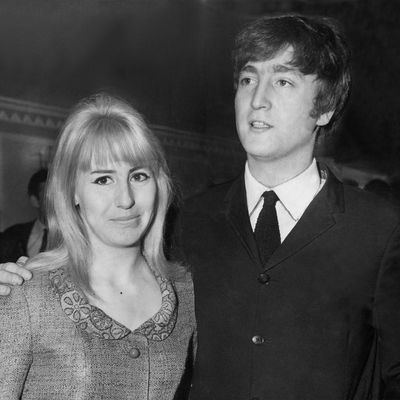
I was enamored of Cynthia Lennon from the moment I met her in the fall of 1980. It was in Ruthin, Wales, where she was running a bed and breakfast, and I was there to interview her for a book I was writing with Peter Brown, the former chief operating officer of Apple Corps, the Beatles’ parent company. Peter had introduced me to all four Beatles and their inner circles — friends, family, wives, and ex-wives — but Cynthia was the only one with whom I felt really simpatico.
Cynthia was a lovely person, sweet, soft-spoken, and — despite living in a fishbowl for most of her life — shy. She was also a melancholic figure, wistful, smoking cigarettes and drinking white wine into the small hours. I could never quite figure out what made her so sad. Improbably, she said she was still in love with John, whom she had seen only once after divorcing him in 1968. Yet she still pined for him and what might have been if not for Yoko. To hear her tell it, she never quite got over that moment when she returned to her Tudor mansion in Weybridge and caught John and Yoko in their bathrobes. In fact, her description of the moment became the opening of my book: “It took her breath away, catching them like that.”
John was murdered in December of 1980, just weeks after that, and Cynthia fell into a deep depression, regretful that they had never reconciled and concerned for what would happen to Julian, her son with John, now that Yoko had complete control of Lennon’s finances. Trying to cheer her up, I invited her to spend a few weeks of the summer with me in East Hampton. I knew she still wanted to be an artist — she had met John at the Liverpool College of Art — so I arranged a show of her work in July at the Tower Gallery in Southampton. She was thrilled, and there was a lot of publicity about the exhibition. None of her art was remotely connected to the Beatles or John Lennon. She instead showed a series of figurative drawings in pencil that were as melancholy as she was. She chose a piece for me as a gift, a reclining nude, and wrote across the bottom, “Thank you for opening a new door for me.”
After her opening — at which none of the pieces sold — we went for dinner along with my friend, the author Joseph Olshan, and later we took a moonlight stroll on Main Beach, East Hampton. Cynthia decided she wanted to go “paddling,” or wading in the surf. We rolled up our pants and she tucked her dress up under her belt. Holding hands, we walked into the ocean.
Immediately a huge wave came out of the darkness and pounded us. We went down like bowling pins. When I got to my feet I could see Cynthia face down in the water, being drawn farther out, her dress blooming up behind her. She wasn’t even struggling; she had given herself over to the sea. Olshan, who is a strong swimmer, dove into the waves and swam after her. He pulled her head above water and dragged her back to the shore.
Driving back to my house in the car we became hysterical with laughter — mad, screaming laughter. When we got home we took off our wet clothes and hung them on the back railing of the deck. I still have a photograph of it somewhere. We were shivering and our teeth were chattering, and Cynthia wanted to sit by the fireplace. But I didn’t have any logs, so we rolled up newspapers and lit them. “That’s the story of my life,” Cynthia said. “A paper fire.”
I don’t know if she ever found a real fire. We lost touch, as she probably did with thousands of people who passed through her life. I followed her from afar. She remarried and divorced three more times, and legally changed her surname back to Lennon. She never had much money. She worked briefly as a television interviewer, she designed bed linens, she published two volumes of memoirs, she opened a restaurant in London named “Lennon,” and she even recorded a single, covering Mary Hopkin’s “Those Were the Days.” Eventually she had to auction off much of her memorabilia to get by. She lived so many places, I couldn’t keep track, and several years ago she moved to the island of Majorca, where she passed away on April 1.
I remember most of all a story she told when I first interviewed her in Wales that has become part of Beatles lore. In August 1967, she accompanied John to Euston Station in London to meet up with the other Beatles and their wives. They were taking a train to Bangor, North Wales, to spend a week on a retreat with the Maharishi Mahesh Yogi. The station was a madhouse with photographers and fans, and the police, not knowing Cynthia was with John, held her back with the crowds. The train pulled out of the station without her, leaving her standing there in a cloud of steam. She broke down in tears. “I knew in my heart,” she wrote years later, “as I watched all the people that I loved fading into the hazy distance, that was to be my future. The loneliness I felt on that station platform would become a permanent loneliness before very long.”




